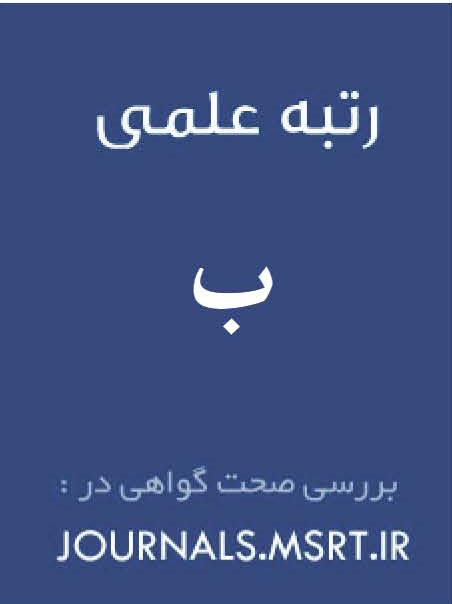Designing a Model for Overcoming Glass Barriers with a Women’s Succession Approach for Key Management Positions in Government Organizations
Keywords:
Glass barriers, succession planning, empowerment, supportive organizational culture, women’s empowermentAbstract
The aim of this study is to design and validate a model for overcoming glass barriers with a women’s succession approach for holding key management positions in government organizations. This research employed a mixed-methods exploratory design. In the qualitative phase, semi-structured interviews were conducted with 20 academic experts, managers, and female employees in government organizations, and data were analyzed through thematic analysis. In the quantitative phase, the population included 5,912 female managers and staff of government organizations in Mazandaran Province, from which 210 participants were selected using stratified random sampling based on Krejcie and Morgan’s table. Data were collected via a researcher-made questionnaire consisting of 16 dimensions and 73 components. Content validity was assessed through expert review and CVI/CVR indices, while construct validity was tested using exploratory and confirmatory factor analyses. Reliability was confirmed through Cronbach’s alpha and composite reliability. Data were analyzed using structural equation modeling. Thematic analysis identified 134 initial codes that were refined into 73 basic themes, 16 organizing themes, and 5 global themes. The key extracted dimensions included empowerment and skills development, supportive organizational culture, talent identification, organizational initiatives, and women’s advancement. Structural equation modeling confirmed the positive and significant impact of all identified dimensions on overcoming glass barriers, and the final model demonstrated a good fit. The results indicate that the systematic implementation of the identified components can reduce gender discrimination, enhance organizational justice, and strengthen women’s access to key management positions. The proposed model offers a localized framework for empowering and succession planning of women in government organizations.
Downloads
References
Akkaya, B., & Bagieńska, A. (2022). The Role of Agile Women Leadership in Achieving Team Effectiveness Through Interpersonal Trust for Business Agility. Sustainability, 14(7), 4070. https://doi.org/10.3390/su14074070
Akpa, V., Smith, J., & Doe, P. (2025). Women in leadership succession planning. International Journal of Public Administration, 48(2), 123-140.
Amin, A., & Asher, B. (2025). Breaking glass ceilings in government organizations. Journal of Gender Studies, 37(1), 15-32.
Ariasih, M. P., Putra, K. E. S., & Suarmanayasa, I. N. (2024). Entrepreneurial Leadership Impact on MSME Women’s Business Perfomance in Denpasar City. Jurnal Ekonomi, 29(1), 60-77. https://doi.org/10.24912/je.v29i1.2013
Baker, J., Clark, L., & Nguyen, T. (2022). Cultural barriers to women in management. Management Review Quarterly, 72(4), 489-507.
Dowling, J. (2017). Invisible barriers for women advancement. Leadership & Organization Development Journal, 38(6), 812-828.
Farah, S., Ibrahim, R., & Khan, M. (2020). Gender glass ceiling myths. Journal of Business Ethics, 165(3), 421-435.
Gallardo Pérez, J., Torres, M., & Ruiz, A. (2021). Women in EU managerial positions. European Management Journal, 39(2), 160-172.
Gano, G., & Boateng, A. (2012). Career path and organizational behaviour impacts. African journal of business management, 6(4), 68-75.
Hoque, M. S., & Islam, N. (2022). Leadership Behaviors of Women Entrepreneurs in SME Sector of Bangladesh. Businesses, 2(2), 228-245. https://doi.org/10.3390/businesses2020016
Imadoglu, Y., Park, H., & Lee, S. (2020). Women career advancement challenges in emerging markets. Asia Pacific Journal of Management, 37(1), 80-97.
Isna. (2023). Report on Women's Management Rates. Iranian Students' News Agency (ISNA)
Kabordi, T., & Saed, R. (2019). Structural barriers for women career growth. Public Sector Management Review, 15(3), 201-215.
Mahat, R. (2025). Advancing women in government roles: Succession planning models. Government Leadership Journal, 29(1), 45-59.
Mohammadi-Far, N. (2023). The Role and Importance of Assuming Leadership Positions in Women's Political Empowerment. Global Politics, 12(1), 97-131.
Padierna, J., Lopez, G., & Santos, E. (2020). Succession planning strategies for women. Journal of Organizational Change Management, 33(4), 675-692.
Pearson, E. (2024). The Radical Right: Misogyny, Masculinities and Women’s Leadership. 147-180. https://doi.org/10.1093/oso/9780197772072.003.0006
Sawalhi, R. (2025). Women’s Educational Leadership and Career Readiness: New Perspectives and Innovative Tools. Jems, 6(2), 72-83. https://doi.org/10.2979/jems.00030
Statistical Center of Iran. (2015). Labor Force Statistics Report. Statistical Center of Iran
Zammit, S. (2021). Building leadership pipelines for women in public administration. International Public Management Journal, 24(5), 589-610.
Downloads
Published
Submitted
Revised
Accepted
Issue
Section
License
Copyright (c) 2025 Mona Jahanian, Farhad Nejad Haji Ali Irani, Yahya Dadash Karimi, Esmaeil Omranzadeh (Author)

This work is licensed under a Creative Commons Attribution-NonCommercial 4.0 International License.

